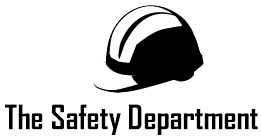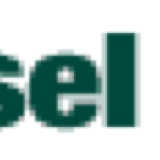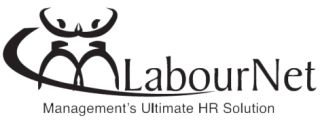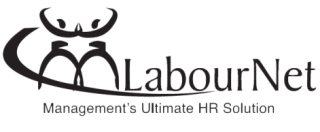Information
-
Audit Title
-
Document No.
-
Client / Site
-
Conducted on
-
Prepared by
-
Location
-
Personnel
Section 1. Legal Obligations
-
Employers have a 'duty of care' to provide a safe workplace and systems of work, to consult with workers, to identify and manage workplace hazards and to keep them informed about health and safety matters.
Safety Management Systems
-
Safety management can best be described as a set of policies, procedures, and actions relating to health and safety in the workplace that ensure an employer is meeting their "duty of care"
-
Is health and safety an agenda item in company meetings?
-
Is there a documented health and safety system?
-
Is health and safety part of the company induction package?
-
Is the state health and safety website accessed?
-
Can they know where to find a copy of the OH$S Act and Regulations?
-
Is there a health and safety policy in place?
-
Do workers know where to find the company health and safety policies and procedures?
-
Is health and safety a consideration when purchasing goods and services?
-
Is there an annual financial investment in health and safety training?
-
Have managers had formal training in health and safety regulatory requirements?
Section 2. Responsibilities and Accountabilities
-
An employer has ultimate responsibility to ensure a safe workplace is maintained. Safety responsibilities should be part of the daily functions of everyone in the workplace. To meet this requirement, employers must ensure that safety management systems are in place and that responsibility and accountability has been allocated to managers, supervisors and workers in the organization.
-
Have health and safety responsibilities been assigned to every person in the organization?
-
Are directors or boards aware of their OH&S Accountabilities and been trained in how to meet their obligations?
-
Are health and safety Accountabilities recorded on the organizational chart?
-
Are heal and safety responsibilities and Accountabilities incorporated into job/position descriptions?
-
Do managers and supervisors have their health and safety performance assessed as part of their overall performance assessment?
-
Does the company ensure that contractors and subcontractors understand their duty of care and meet regulatory compliance?
-
Are there managers or supervisors assigned responsibilities for supervising contractors working on site?
-
When managers or supervisors are absent from the workplace are health and safety delegation of responsibilities re-assigned?
-
Is there a system that checks whether managers, supervisors and employees fully understand their health and safety responsibilities?
-
We their nominated and trained health and safety personnel in place to ensure safety at work is being enacted?
Section 3. Consultation
-
Consultation is the process of informing everyone of safety matters by giving them sufficient information to consider safety issues, seeking their feedback and taking into consideration when making decisions in relation to safety at work. Effective consultation can be achieved in many ways and the system needs to suit the environment. The key factors are informing the workforce, allowing sufficient time consider safety matters, seeking their feedback and taking that into consideration. There is no shortcut to this process and records of all consultation must be kept.
-
Is there a formal documented and advertised method for raising health and safety issues?
-
Do workers know what the forum is for raising health and safety issues?
-
Does management raise health and safety issues with workers?
-
Are issues raised by workers recorded and passed onto management for review?
-
Are workers informed of regulatory changes affecting health and safety?
-
Are workers informed of changes to the workplace, e.g. New equipment, renovations etc and consulted in relation to workplace safety?
-
When a safety hazard is identified by a worker, are other workers informed of this and asked for input prior to decisions regarding actions and resolutions are made?
-
Are workers from different shifts considered when consulting the workforce or distributing information?
-
Do managers and workers understand the significant difference between communication and consultation in relation to workplace safety management?
-
Is there a documented process (and records) incorporating hazard identification, risk assessment and risk control showing that workplace consultation has occurred?
Section 4. Risk Management
-
An employer must ensure that appropriate measures are taken to identify the hazards and assess the risks to health and safety of every person in the workplace. When an unacceptable risk to health and safety has been identified, controls must be introduced to either eliminate or reduce the risk to an acceptable level. This must take into consideration the method known as 'hierarchy of controls'.
Risk Management - Hazard Identification
-
The key to hazard identification is finding the hazards before they find you. A hazard is something with the potential to cause harm.
-
Is there a documented hazard identification process in place?
-
Do employees know how and when to report a hazard?
-
Do workers actually report hazards?
-
Are all areas in the business aware of, and actively involved in hazard reporting?
-
Is there a periodic safety inspection or audit that seeks to identify workplace hazards?
Risk Management - Risk Assessment
-
The process of risk assessment is about determining the likelihood of a hazard actually causing harm. Risks associated with an identified hazard need to be assessed to determine how sever or hazardous they are. To determine the level of severity the following needs to be taken into account: likelihood, severity and frequency.
-
Are risk assessed following a formal risk assessment process as per AS4360?
-
Are workers involved in the risk assessment process?
-
Are records kept of the assessment process (30 years)?
-
Are subcontractors or subcontracted work subject to the risk assessment process?
-
Are risk assessments available to workers?
Risk Management - Risk Control
-
Risk controls follow on from the risk assessment process where a risk has been assessed as unacceptable and requiring some improvements or controls initiated. Risk controls shall follow the 'hierarchy of control'.
-
Has a hierarchy of controls been used when determining controls?
-
Are workers involved in the risk control process?
-
Are risk controls implemented and checked to ensure they are effective?
-
Are risk controls periodically reviewed to ensure they are still effective?
-
Are new employees informed of workplace hazards and the controls in place?
Section 5. Information, Instruction and Training
-
Employees must be given adequate information on the hazards they encounter, the tasks they are required to undertake and emergency processes in place. Instruction and training is required to ensure safe systems of work are effectively achieved and maintained. Information that should be communicated includes: hazards and risks, emergency and safe work procedures,. Training includes as a minimum: inductions, operational procedures and appropriate operational standards.
-
Are there documented procedures for operational tasks where employees or sub contractors are required to follow company systems?
-
Is there a notice board or equivalent area where safety information can be displayed and viewed by workers throughout the course of their day?
-
Is there a training plan in place and actioned to deliver training and assess competency of workers?
-
Is there an induction system for employees and subcontractors?
-
Are licenses, permits to work and operator competencies identified and incorporated into a training plan?
-
Are workers supervised as part of their daily work activity?
-
Is there a clear criteria that identifies the degree of supervision required according to levels of knowledge, competence and experience?
-
Is training provided by persons with adequate skill and in a manner which suits the working environment?
-
Are induction training records kept of employees and subcontractors to provide evidence of workplace competencies?
Section 6. Managing Injuries
-
Managing injuries requires workers to have access to first aid and be informed about and have access to workers compensation and rehabilitation programs. First aid facilities and first aides appropriate to workplace risk must be in place and available in a timely manner when needed. Injury management must show workers that they will be cared for both financially through compensation and physically through rehabilitation and meaningful return to work.
-
Has an assessment of first aid needs been completed in consultation with workers or representative?
-
Is there a procedure for replenishing first aid kits and keeping first aides skilled and competent?
-
Is information readily available to inform workers of rehabilitation and workers compensation regulatory entitlements?
-
Is there a rehabilitation policy on display or accessible to all staff?
-
Does an identified and trained staff member process claims within regulatory time limits?
-
Does the organization maintain regular contact with injured employees?
-
Does a senior staff member liaise with the injured worker, insurer, and doctor following a workplace injury and coordinate a documented return to work plan?
-
Are records of workers compensation claims kept in a locked cabinet and information held as confidential?
-
Is there a dispute resolution procedure in place and known to employees in the case of a grievance or concern by an injured employee?
-
Is there a periodic review of claims to seek opportunities for safety improvement to avoid injury repetition?
Section 7. Record Keeping
-
An employer must keep records to prove compliance to legislation. Record keeping is mandatory.
-
Are records relying to health and safety maintained?
-
Are training and health monitoring records kept?
-
Are records of plant and equipment operation including hours, maintenance and repairs kept?
-
Are there records kept for investigations as well as accident reports and injury register?
-
Is there a register of hazardous goods and substances?
-
Are records kept in a manner where they are not likely to be lost?
-
Is archiving well managed and records kept for appropriate time?
-
Is electronic record keeping backed up and protected from viruses?
-
Are there delegated responsibilities on job descriptions for record kerosine and archiving?
-
Are electronic data backups periodically tested to ensure they can be accessed?
Section 8. Monitoring, Review and Improvement
-
Monitoring and review of safety systems in place and workplace safety in general must be undertaken to see how effective systems are and act on any significant changes required as a result of legislative changes or additional hazards identified. This requires processes to be assessed to ensure they are effective,.
-
Is a risk register in place that clearly documents risks, priorities the risks, identifies and monitors the control of risk and is periodically reviewed for effectiveness and completeness?
-
Is a peron delegated to periodically ensure workplace legislative change is being managed? Has this been reviewed within the last 12 months?
-
Are plant and equipment inspections, service records and maintenance programs periodically reviewed to ensure they are being maintained and are effective?
-
Is the training plan periodically reviewed along with job descriptions and training records to ensure all licenses, permits and competencies meet the needs of the job role..
-
Are work processes periodically assessed in consultation with employees to ensure they are effectively managing the process and associated risks?
-
Are buildings and general workplaces periodically reviewed to ensure they meet current building and emergency regulations?
-
Are consultation mechanisms tested for their effectiveness? Do staff know how to report hazards and have they been insulted?
Signature
-
Strategic Safety and Training Consultant













